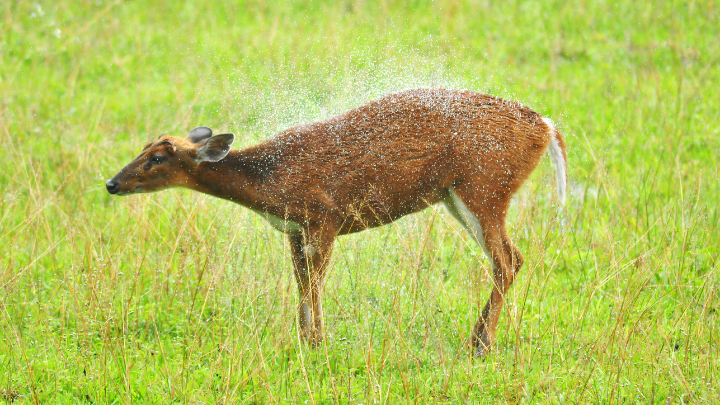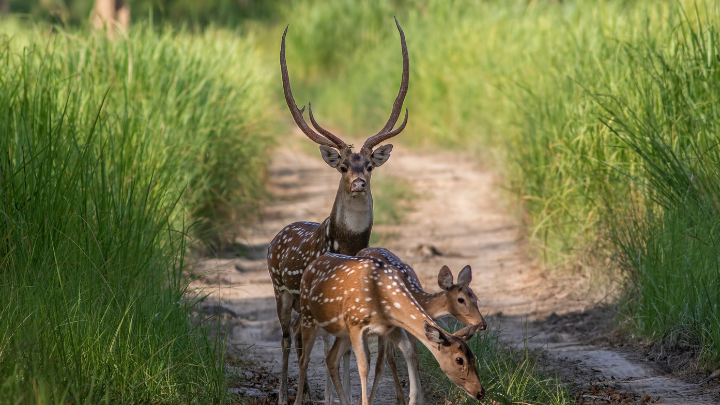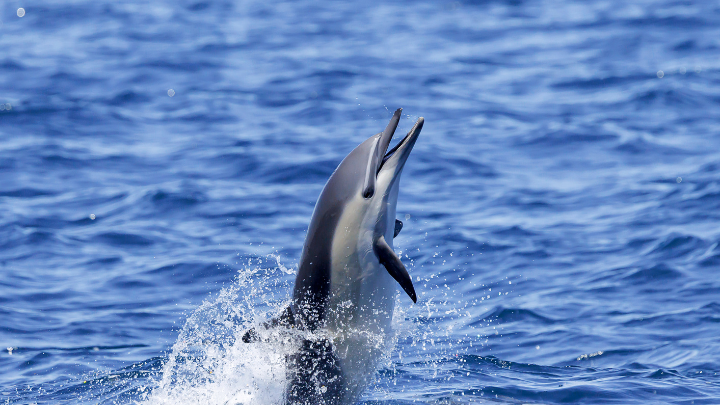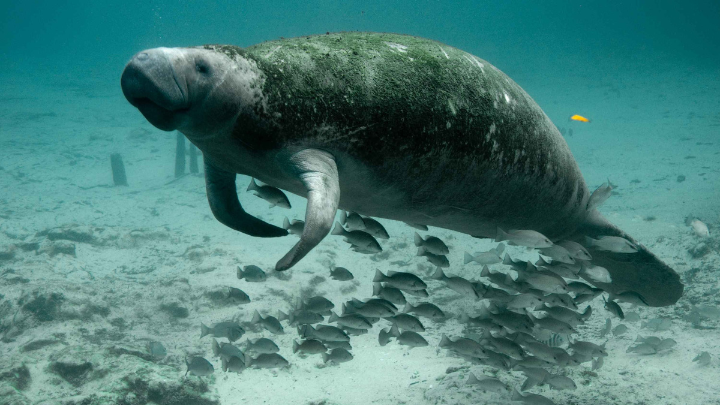Fauna of Andaman and Nicobar Islands
Fauna of Andaman and Nicobar Islands: Hey there, nature enthusiasts! Ever wondered about the animals that call the Andaman and Nicobar Islands their home? These islands aren’t just pretty beaches and blue waters – they’re a paradise for all kinds of creatures. We’re here to take you on a virtual adventure into the world of the Fauna of Andaman and Nicobar Islands. Yep, that means we’re talking about the animals that live here!
Picture this: lush forests, sparkling beaches, and a bunch of cool animals living their island life. From furry friends on land to mysterious critters underwater, these islands have it all. In this article, we’re diving deep into what makes the animal life here so special. So, grab a seat and get ready to explore the amazing Fauna of Andaman and Nicobar Islands – it’s like going on a wildlife safari from your couch! And hey, we’ll also chat about why taking care of these creatures is a big deal. Let’s get started!
Table of Contents
Exploring the Fauna of Andaman and Nicobar Islands
1. Andaman Spiny Shrew

Commonly seen mostly on Wright Myo and Mount Harriet in the South Andaman Islands, the Andaman Spiny Shrew is a species that is native to India. It is classified on the list of vulnerable species (as of 2021) of the International Union for Conservation of Nature (IUCN) principally because of extreme weather changes, natural disasters like tsunamis, and logging practices. The habitats they inhabit are subtropical and tropical dry forests. They generally use rock crevices and leaf litter as their homes.
2. Andaman Wild Pig

It is believed that the Wild Pig of Andaman belongs to the species of porcine and is found mostly within the Jarawa Reserve forest area. The medium-sized, threatened pig family is short-legged and black in color. They are also prolific breeders, but the fact that they breed is not beneficial due to the hunter-gatherer practices that are practiced by the nearby Jarawa tribe, who see them as the primary source of protein.
3. Barking Deer

The Barking Deer remains one of the few herbivore species that were introduced to Andaman as well as the Nicobar Islands. These animals were brought in by colonialists in 1905 because of the dearth of wild game to be hunted. hunting. Although shy, they were excellent swimmers, and they soon managed to move to the other side of the islands. They are currently located in the north and middle of the archipelagos.
4. Sperm Whale

The largest of the toothed whales, it is the largest of the whale species of large size that are found close to and around the Andaman and Nicobar Islands. Also referred to as cachalot, they are the biggest predators with teeth in the world however, they are still on the endangered list of the IUCN. They get their name from Spermaceti, generally referred to as sperm oil. It is the white and waxy substance that is located inside the head cavities of these animals. It was used to create candles, lubricants, and oil lamps, among other things.
5. Chital

Originating from the Sanskrit word “citrala,” which translates to spotted. Chital or Indian Spotted Deer is a species that is found in abundance not just in Andaman but across the globe. Because of their abundance, they are now regarded as a concern” on the IUCN Red List. The main concern posed by their high population is that it poses a threat to the forest cover, and consequently other animals, as their primary diet is made up of fruits, seeds, and leaves when grass is not readily available.
6. Common Dolphin

Dolphin Watching is one of the most sought-after things that draws tourists to The Andaman and Nicobar Islands. Being part of the “Least Concern” category of the IUCN Red List, their species isn’t in imminent danger of becoming extinct. They usually occur in groups of just 2 or 3 hundred to hundreds. Lalaji Bay Beach on Long Island, Jolly Buoy Island, and Havelock are the most popular spots to look for them.
7. Dugong (Seacow)

After being hunted for hundreds of years for meat and oil, The dugong, also known as the sea cow, is listed as vulnerable on the IUCN Red List. Seagrass is their primary food source, and therefore they are located in meadows that are continuous and have large seagrass areas. Little Andaman’s Dugong Creek is the best option for you to see the national animal of Andaman and the surrounding islands, including the Rutland Islands, Ritchie’s Archipelago, and Havelock as examples.
8. Palm Civet

Civets are a different species among the species introduced to the island. They are found throughout areas like the North, Middle, and Southern regions they fall under the “Least Concerned” category of the IUCN Red List. They typically live in caves, acacia tree holes, and other dark areas. One of the main motives for poaching them is that they aid in the production of the most expensive coffees in the world. Asian Palm Civets excrete coffee beans that have been fermented and are then processed into kopi luwak, or civet coffee which is said to be extremely nutritious.
To have an exciting and thrilling journey to discover the diverse Andaman wildlife and the many treasures it has to offer a comfortable and accessible accommodation that offers all amenities for guests is essential. Symphony Samudra Beachside Jungle Resort and Spa located in Port Blair, Symphony Palms Beach Resort and Spa situated in Havelock and Symphony Summer Sand Beach Resort and Spa located in Neil Islands are the best resorts in Andaman to enjoy your life in luxurious luxury after a day of discovery and exploration!
Read This Also: Flora of Andaman and Nicobar Islands
Exploring the Flora of Andaman and Nicobar Islands
Highlights To Look Forward To:
- One-of-a-kind plants: The islands are home to an array of plants that you will not see elsewhere on Earth. These unique botanical treasures highlight the island’s distinctive development.
- Find Rare Beauty: As you explore the area, you’ll find exotic and beautiful plants that have adjusted to the unique island’s conditions. Each plant has a unique story of resilience to tell.
- The Natural Remedies Explore the medicinal plant world. Nature offers remedies that have been used for a long time. Learn about the beneficial properties of these plants.
- The Flavors of IslandsThe plants of the islands aren’t only stunning visually but can also enhance the cuisine of the islands. Discover the plants that are used in traditional meals and beverages.
- Conservation Initiatives: Learn about the efforts that are being undertaken to preserve the islands’ amazing biodiversity of plants through conservation efforts.
A Visual Treat
Imagine the symphony of colors, ranging from vibrant flowers to delicate greens. The island’s flora offers an aesthetic delight that will make you stupefied by the beauty of nature. world.
A Sneak Peek into the Diversity:
Here’s a peek at the kinds of products you can anticipate:
| Plant Category | Examples of species |
| Unique Islanders | Andaman Pygmy Date Palm, Nicobar Megapode |
| Nature’s healers | Andaman Noni, Nicobar Nutmeg |
| Coastal Charmers | Beach Morning Glory, Sea Hibiscus |
| Tasty Island Sweets | Breadfruit, Banana Plant |
| Nature’s protectors | Andaman Padauk, Nicobar Ironwood |
Travel Tips for Andaman and Nicobar Islands
Traveling to the Andaman and Nicobar Islands can be an exciting and memorable experience. Here are some travel tips to help you make the most of your trip:
- Plan Ahead: Research and plan your trip well in advance, including flights, accommodations, and activities. The islands can get busy during peak tourist seasons.
- Entry Permits: Indian nationals do not require a permit to visit the Andaman Islands, but foreigners do. You can obtain the necessary permits upon arrival at the Port Blair airport or from Indian missions abroad.
- Best Time to Visit: The best time to visit is during the winter months, from November to February when the weather is pleasant and the sea is calm. Avoid the monsoon season from May to September when heavy rainfall and rough seas are common.
- Packing Essentials: Pack light and comfortable clothing suitable for a tropical climate. Don’t forget to bring swimwear, sunscreen, a hat, sunglasses, insect repellent, and a basic medical kit.
- Local Culture and Etiquette: Respect the local customs and traditions. The islands have a diverse mix of cultures, so be sensitive and open-minded.
- Language: Hindi and English are widely spoken, but learning a few basic phrases in the local language can be appreciated by the locals.
- Health and Safety: Drink bottled or purified water and be cautious about consuming street food. Make sure you have the required vaccinations and medications before traveling. Be cautious while swimming, as some areas can have strong currents.
- Activities: The islands offer a range of water activities such as snorkeling, scuba diving, and water sports. Make sure to choose operators with good safety records.
- Island Hopping: The Andaman and Nicobar Islands consist of many islands, each with its own unique attractions. Plan your itinerary to explore multiple islands and their offerings.
- Cellular Connectivity: While cellular coverage is available, it can be patchy in some remote areas. Purchase a local SIM card if you need reliable connectivity.
- Cash and ATMs: Carry enough cash, as ATMs might not be easily accessible on some islands. Port Blair, the capital, is likely to have better banking facilities.
- Respect the Environment: The islands’ ecosystems are delicate. Avoid littering, especially on beaches and in marine areas. Respect the wildlife and marine life by not disturbing them.
- Photography: Ask for permission before taking photographs of locals, especially indigenous communities. Some areas may have restrictions on photography.
- Indigenous Communities: The islands are home to indigenous tribes. Respect their privacy and adhere to any restrictions or guidelines in place to protect them.
- Book Accommodation in Advance: Especially during peak tourist seasons, it’s advisable to book your accommodations in advance to ensure availability and the best rates.
Remember that the Andaman and Nicobar Islands are pristine destinations, and responsible tourism practices are essential to preserve their beauty and biodiversity. Always follow local regulations and guidelines to ensure a respectful and enjoyable trip.
Read This Also: Ready to Eat Food for Travel
Best Time To Visit Andaman and Nicobar Islands
The best time to visit the Andaman and Nicobar Islands is during the winter months, from November to February. This period offers the most pleasant weather with moderate temperatures and calm seas, making it ideal for outdoor activities and water sports. Here’s a breakdown of the seasons and their characteristics:
Winter (November to February):
Temperature: The weather is mild and comfortable, with temperatures ranging from around 20°C to 30°C (68°F to 86°F).
Sea Conditions: The sea is generally calm, making it suitable for water activities like snorkeling, scuba diving, and boating.
Rainfall: Minimal rainfall during these months.
Tourist Crowd: This is the peak tourist season, so you can expect larger crowds and higher prices for accommodations and activities. It’s advisable to make bookings well in advance.
Summer (March to May):
Temperature: Temperatures start to rise, ranging from 24°C to 37°C (75°F to 99°F).
Sea Conditions: The seas become rougher, and there’s a possibility of occasional rain showers and thunderstorms.
Rainfall: The islands experience some rainfall during these months, with May being the hottest and most humid.
Tourist Crowd: The number of tourists begins to decrease during this period, but it can still be relatively crowded.
Monsoon (June to September):
Temperature: Temperatures remain relatively constant, ranging from 24°C to 35°C (75°F to 95°F).
Sea Conditions: The monsoon season brings heavy rainfall and rough seas, which can impact water-based activities.
Rainfall: This is the wettest period, with frequent heavy rain showers and the possibility of cyclones.
Tourist Crowd: The monsoon season is considered the off-peak period, and tourist numbers are lower. Many water activities might be limited during this time.
Post-Monsoon (October):
Temperature: Temperatures start to drop, ranging from 24°C to 35°C (75°F to 95°F).
Sea Conditions: Seas start to calm down as the monsoon season ends, making it more favorable for water activities.
Rainfall: Rainfall reduces as October progresses, signaling the end of the monsoon.
Tourist Crowd: Tourist numbers begin to increase in October as the weather improves.
The best time to visit the Andaman and Nicobar Islands is during the winter months (November to February) when the weather is pleasant, the sea is calm, and most outdoor activities can be enjoyed. However, if you’re looking for a quieter and more budget-friendly experience, you might consider visiting during the post-monsoon period (October) when the weather is also favorable.
Conclusion
And that’s a wrap on our adventure into the world of animals on the Andaman and Nicobar Islands! We’ve had a blast getting to know the creatures that call these islands home – that’s what we mean by the Fauna of Andaman and Nicobar Islands. It’s been like peeking into a secret animal club!
Now, as we say goodbye to our virtual island exploration, let’s remember something important. All these animals, from the big ones to the tiny ones, have a crucial role to play in keeping the islands awesome. But guess what? They need our help to stay awesome.
The Fauna of Andaman and Nicobar Islands is special, and it’s up to us to take care of it. Imagine if everyone picked up their trash, didn’t disturb animal homes, and treated the islands like the cool nature spots they are. That would be amazing, right?
So, as we wrap up, let’s promise to be good friends to the animals. We can spread the word, make mindful choices, and support efforts to keep these islands a safe and happy place for every critter. It’s like being a superhero for island animals – how awesome is that? Here’s to the animals, the islands, and the awesome adventure of keeping nature safe and sound!